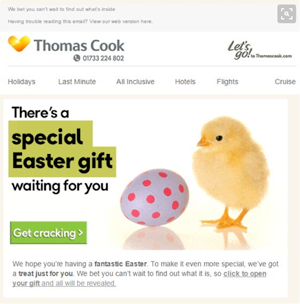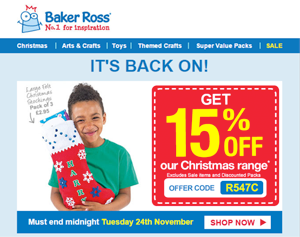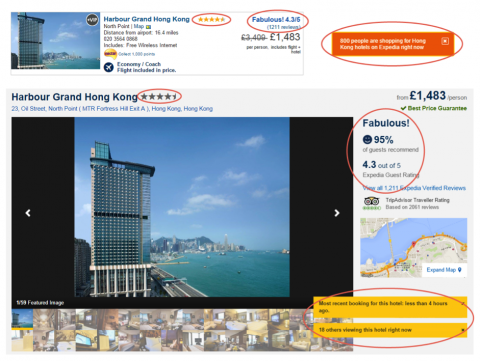Selling chocolate eggs to the general public at Easter isn’t exactly selling ice to the Eskimos. However, for the businesses who don’t have this delicious advantage, there are other ways of creating effective and fun campaigns to leverage this annual marketing opportunity. Fresh Relevance has collected a few great examples of chocolate-free brands who’ve been creative with their marketing in the last few years.
Individual Coupons Issued from Email Campaigns
We now issue coupons to individuals opening emails or visiting a client’s website.
Coupons are a good way to attract shoppers back to your website during the festive season and January sales. Coupons are known to drive loyalty, and consequently revenue.
As well as old‐style individual and mass coupons, you can use a lot of tricks to preferentially target loyal customers. For example:
People base their decisions on the wisdom of the crowd and their peers. Online 61% of customers read reviews before making a purchase decision. Think about how you choose a restaurant, you go into the one that's busy, not empty, as you think the food must be better. Social proof drives sales in the same way. Social proof is important.
We now provide automatic daily or weekly emails.
This allows online retailers to increase their email send frequency and make more revenue, without doing more work to setup email campaigns manually.
We've added Social Proof for Web and Email Campaigns.
This allows online retailers to easily share with shoppers real-time statistics, showing what products and services have been recently viewed and/or purchased. For example "28 others are viewing this hotel right now!" or "7 recently bought!".
"Browse abandonment emails are straightforward, focused, real-time emails to offer help and call shoppers back. They are different from newsletters, and marketing brochures, and other types of abandonment emails."
"Triggered messaging is a rapidly growing part of marketing with extremely good ROI. It's about delivering business messages that are personalized and near-real time: often sent by email but increasingly by other channels such as within web pages. "








